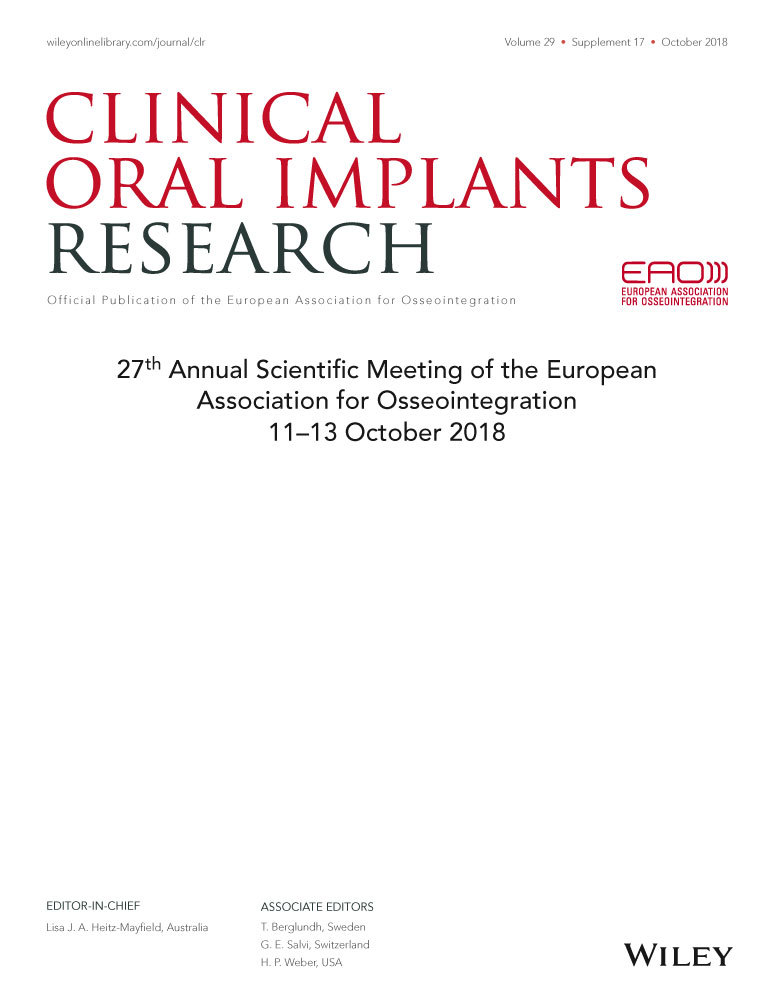Short plateau implants in posterior maxilla – prediction of bone turnover
12325 E-POSTER BASIC RESEARCH
Background
Insufficient bone remains challenging for implantologists, especially in posterior maxilla. Short implants are indispensable in such situations. Implant design, bone quality and quantity significantly influence the functional load transfer. Bone strains are major stimuli of bone turnover, but their high magnitudes result in implant failure. Numerical analysis is necessary to correlate bone and implant parameters with bone strain spectrum and to evaluate implant prospect.
Aim/Hypothesis
The aim of the study was to evaluate the impact of Bicon Integra-CP™ implants and bone quality on strain levels in adjacent bone to predict implant success failure in atrophic posterior maxilla.
Material and Methods
Nine Bicon Integra-CP™ implants with 4.5 (N), 5.0 (M), 6.0 (W) mm diameter and 5.0 (S), 6.0 (I), 8.0 (L) mm length were selected for this comparative study. Their 3D models were placed in 36 posterior maxilla segment models with types III and IV bone, 1.0 (A) and 0.5 (B) mm crestal cortical bone thickness. These models were designed in Solidworks 2016 software. All materials were assumed as linearly elastic and isotropic. Elasticity modulus of cortical bone was 13.7 GPa, cancellous bone – 1.37 0.69 GPa (type III IV). Bone-implant assemblies were analyzed in FE software Solidworks Simulation. A total number of 4-node 3D FEs was up to 3,580,000. 120.92 N mean maximal oblique load (molar area) was applied to the center of 7.0 mm abutment. First principal strain (FPS) distributions were studied according to the concept of “minimum effective strain pathological” (MESp) by Frost. Maximal FPSs were correlated with 3000 ustrain MESp to evaluate the prognosis of each implant.
Results
Maximal FPSs spectrum 200–7500 ustrain was found in the cortical-cancellous bone interface. Critical FPSs (>3000 ustrain) were observed for N implants for IV, A B, S I L and III, A, S I scenarios. For M and W implants, critical FPSs were found only for M, III IV, A, S I, M, IV, B, S I and W, IV, A, S scenarios. Favorable FPSs (200–3000 ustrain) were calculated in vicinity of W implants for all scenarios excluding IV, A, S. For M implants, favorable FPSs were observed for IV, A B, L, III, A, L and III, B, S I L scenarios, and only III, A, L and III, B, S I L for N implants. Implant diameter increase (4.5 vs. 6.0 mm) have led to 71 87, 74 88, 66 88, 57 80, 60 81, 56 73% FPS reduction for 1.0 0.5 mm cortical bone and III, S, III, I, III, L, IV, S, IV, I, IV, L scenarios. FPS magnitudes were found sensitive to bone quality- FPS reduction in type III bone relative to type IV was 25 46, 26 48, 32 48, 17 41, 20 46, 33 50, 48 64, 52 67, 47 76% for 1.0 0.5 mm and N, S, N, I, N, L, M, S, M, I, M, L, W, S, W, I, W, L scenarios.
Conclusions and Clinical Implications
Bone strains were influenced by implant dimensions, cortical bone thickness and bone quality. 4.5 mm diameter implants with the largest length were recommended only for type III bone. 5.0 × 8.0 mm implant was suitable for both bone types and cortical bone thickness, shorter implants – only for type III and 0.5 mm cortical bone. 6.0 mm diameter implants caused positive bone turnover balance for all but one scenarios. Clinicians should consider these findings in planning of short plateau implants.




